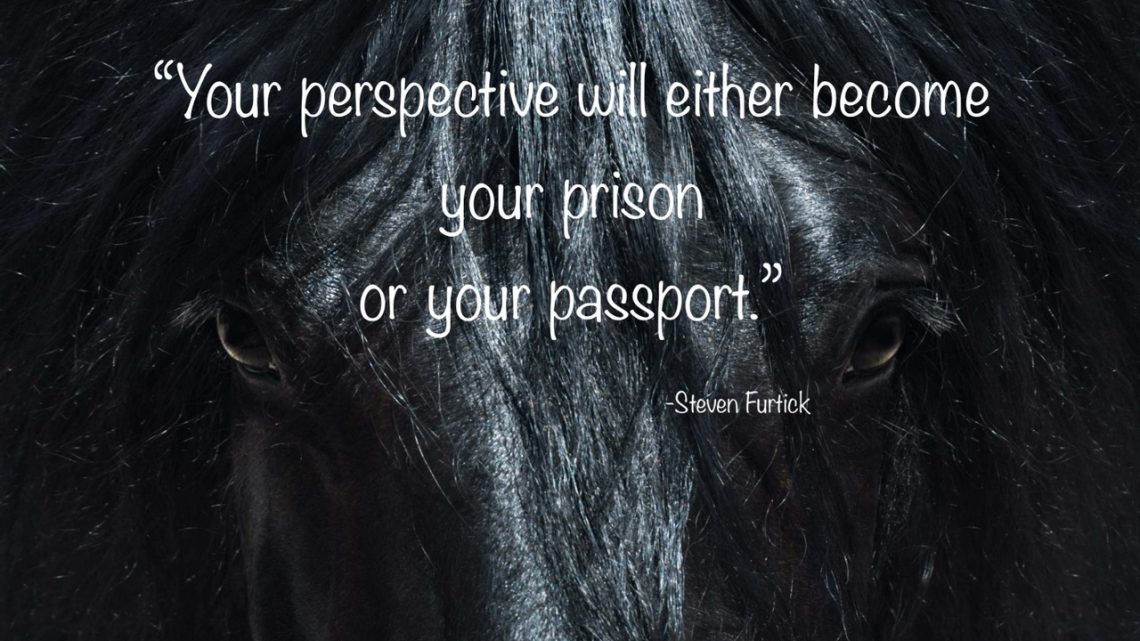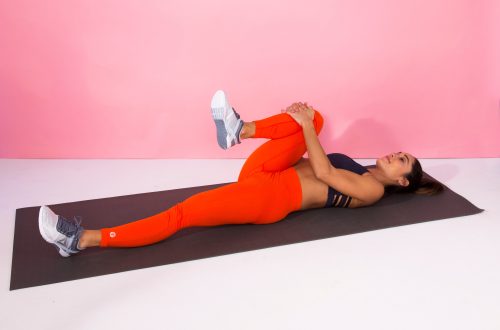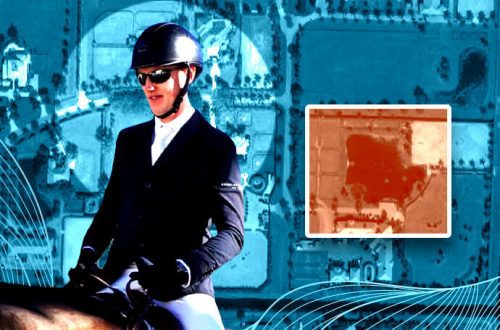
Point of view: what to do if the horse smashed?
Point of view: what to do if the horse smashed?
Most riders are convinced that they control the horse by controlling its head. But it’s not. You control the horse by controlling his mind. And you can control a horse’s mind by first taking control of your own. Mind control is what we teach our students through the Attention to the Rider method. (from the verb to listen – ed.). The person next to the horse must constantly “be in the game”, accompanying the horse with his mind at every step – it doesn’t matter whether he leads the horse from the levada to the stall, from the stable to the horse carrier, whether he leaves to work in the field or start the tournament .
If the horse is blown, then the first thing the rider should think about is ride (!) on a horse, not stop it. Most of the methods proposed for stopping a runaway horse put the person in a more dangerous position than simply sitting in the saddle until the horse gets tired or is far enough away from the object that caused the rundown and the horse stops. herself.
If you try to stop a runaway horse by pulling hard on one rein, leading him into a circle with a small diameter, you are creating two huge problems for the horse. First, you deprive her of the ability to see where she is running. The horse is more likely to fall into a ditch, crash into a tree or into a fence long before it stops on the circle. Secondly, by pulling the head to one side and fixing it there, you create a real balance problem for the horse. The horse may stop, but only because it falls to its knees or on its side. The first thing you need to do when a horse breaks is to let him see where he is running, where he is putting his feet, and this is a matter of your own safety.
The idea of trying to stop the horse with two reins is also not a good idea. The “cavalry stop” involves the following: using one hand as a lever, fixing it on the neck and passing both reins under it, with the other hand pull the reins up, stopping the horse. Another option is to lock both reins with both hands at the middle of the crest of the horse’s neck and pull the reins down the neck to the withers, pulling the horse’s jaw back to his chest. The problem is that this pressure by itself doesn’t make any real sense to the horse until you work it out in advance. By using leverage, you are putting a lot of pressure on the horse’s jaw, no doubt about it. But for the horse, it has no specific connection with stopping. If the horse is frightened, such intense, extreme pressure simply becomes another reason to run away from.
What makes the situation even worse? By tensing, tightening your joints, blocking yourself and hanging on the rein, you become a “candidate for elimination”. Your own tense muscles will make you bounce off the horse like a ball. The horse can also easily pull you forward from the saddle, over the neck.
Therefore, the first thing to think about when a horse has broken is to ride it, not to stop it. You need to mentally imagine a picture of riding, moving with a horse. You must control your mind and focus on thoughts of solving the problem, not on panic.
The first thing to focus on is maintaining balance.. If your saddle has a handle or strap, you can hold on to it to help balance, but be sure to do it with your free hand. Clamped muscles “bounce” from the saddle, like a ball. When the horse is accelerating at the beginning, you may have to lean forward a bit to keep your balance. But you must return to your seat as soon as possible. If you sit upright, you will not “leave” over the horse’s shoulder if he makes a sharp turn or lowers his neck and head.
Remember the rhythm immediately after balance. Focusing on the rhythm will allow you to relax and “get back to the horse”. You can start by focusing on the rhythm of your breathing, then on the rhythm of the horse’s gallops.
Once your rhythm matches that of the horse, you can begin to tighten your legs a little each time the horse pushes off during a new stride, and then relax them to allow him to complete that stride. This contraction and release aligns you with the horse and begins to draw his attention to you. If the horse hasn’t stopped on its own yet, you can start using the rhythmic pressure of your aids to help him relax. Gradually, you can take control back into your own hands and begin to influence the pace of the horse’s canter, and not just ride it. Now you can safely stop the horse by applying the full corridor of controls, which he understands as “stop”.
If you are being chased by a bee and you suddenly hit your foot hard on a stone, the pain in your foot will make you quickly forget about the bee.
When a horse begins to run away in a panic at the sight of a real danger or an imaginary “horse eater”, the rider who panics and begins to pull on the reins with a frantic effort quickly becomes a “rock”. You become a bigger problem than the horse was worried about before.
Attention to the Rider is a way to learn how to become the safest, most comfortable “place” for the horse, someone he can trust in any situation, someone who remains stable always and everywhere. So when “the world is falling apart,” your goal is to get your horse back to seeing you as the safest place for him so that he can forget about what caused him to panic. And you do this by controlling your mind. The horse should not take care of you, you should take care of the horse!
Lack of confidence contributes to panic thoughts, so if you are unsure about your horse, you need to work on it. Working from the ground on attention gives the rider the opportunity to learn how to use rhythm to relax the horse, show him that this relaxed state is the “place” that really feels good to be in, and then keep that feeling between himself and the horse as the training progresses. process.
If you feel insecure about your ability while riding a broken horse, you need to go back to where your own rhythm or relaxation or balance or whatever started to falter. As you master each riding skill in order, you will gain the confidence to maintain control of your own mind when the horse is out of control and out of control.
Ron Meredith (source); translation by Valeria Smirnova.
 Bambi 21 February 2018 city
Bambi 21 February 2018 citySuch advice is not suitable if there is not an open field ahead, but a route dangerous for the horse’s legs. She will simply kill herself if you do not stop and kill you! Answer
 Nastia 21 February 2018 city
Nastia 21 February 2018 cityThought the same thing too. These recommendations are good when you are on flat fields, or paths ahead for many kilometers. Answer
 Maria 21 February 2018 city
Maria 21 February 2018 cityAgree! Therefore, the heading “Point of view”. But there is a healthy grain for a number of cases 🙂 Answer
 Nastia 22 February 2018 city
Nastia 22 February 2018 cityCertainly there is. Answer
- Fuleko 9 March 2018 city
Today, before reading this article, I had a similar situation. My horse began to add a gallop and felt that I could not stop him. And then it occurred to me to just enjoy the gallop, I relaxed, stopped panicking, took my back back and he began to slow down. Just from my calm state. So there is some truth in this article)))) Answer





